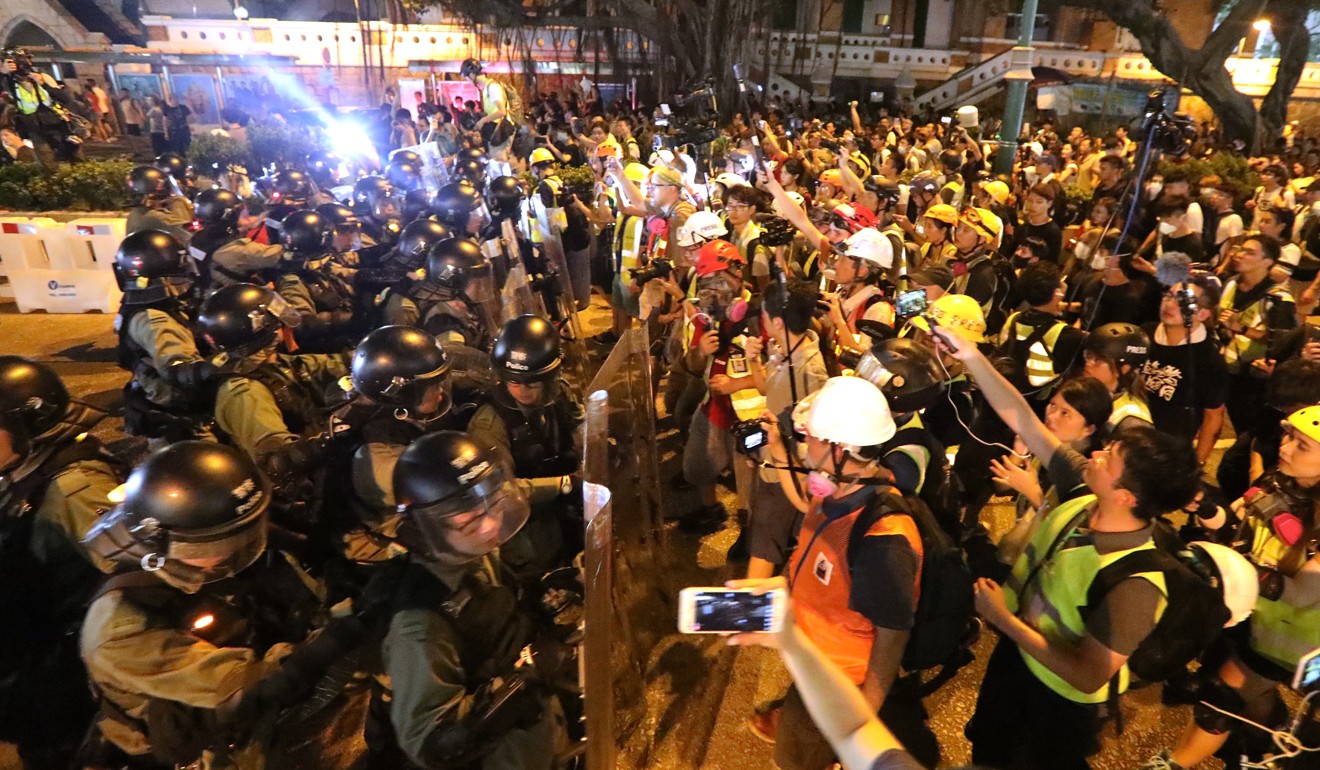
Court battle intensifies over medical records of woman who suffered serious eye injury during Hong Kong protests
- Police lawyer accuses woman of impeding an investigation by seeking to access the warrants police used to obtain her medical records
- Court hears police obtained two warrants for Queen Elizabeth Hospital – one for her personal details and another for her admission records

A lawyer for the Hong Kong police has criticised a woman who sustained a serious eye injury during an anti-government protest, accusing her of obstructing an investigation by seeking to access the warrants the police used to obtain her medical records.
The High Court had on September 13 granted permission to the injured woman, identified as K, to continue a legal challenge against Commissioner of Police Stephen Lo Wai-chung, who she said had infringed her rights to privacy and access to court documents by refusing to provide her with copies of the two police warrants.
At the substantive hearing on Monday, the woman’s lawyer, Robert Pang Yiu-hung SC, told Mr Justice Godfrey Lam Wan-ho that she had intended to appeal to the magistrate who authorised the police to acquire the records to set aside the warrants – but the police’s refusal to provide her copies of the warrants had made it impossible to make such a request.
But Johnny Mok Shiu-luen SC, for the police commissioner, said the woman had done nothing but “raise smoke without any fire”. He said she had all the information required to file the intended applications to the court.

“She cannot hide or excuse herself for not taking any actions by saying she did not know who the magistrate was,” he said, pointing out that she could have alternatively applied to the chief magistrate.
He said the woman was found injured at the centre of an unlawful assembly during which protesters attacked a police station, and that her possible involvement “could not be regarded lightly”.
The woman was hit in the right eye during clashes between protesters and police in Tsim Sha Tsui on August 11. She said the injury was a result of a “suspected beanbag round shot by anti-riot police”. But officials disputed her claim, and suggested she might have been hit by a projectile fired by protesters.
The court heard that Queen Elizabeth Hospital, where the woman was admitted after her injury, had sent her medical records to the police on September 4 after the police obtained two warrants on August 29 – one for the woman’s personal details and another for her admission records.
That was despite the hospital telling the woman’s lawyers on September 2 that it did not intend to hand over her reports, the court heard. Her lawyers informed the police of the woman’s intended legal action the following day.
At the first hearing on September 12, lawyers for the police had undertaken to seal the woman’s medical records that had been obtained and not use them in court before the resolution of the present judicial review lawsuits.

On Monday, Pang said it was incumbent on law enforcement agencies to show a warrant to any persons affected by it upon their request. “Without a copy of the warrant, we are effectively denied going to court,” he said.
Lam questioned the applicant’s proposition that a medical report was on “a different footing” than other types of documents. Citing an example of a street fight, he said it was not uncommon for police to seek medical reports of the victim, which could help police identify any weapons used.
Pang said a medical report contained intimate personal details and the court was required to take into account privacy issues when deciding whether to grant a warrant for such a document. Otherwise, he said, people injured during a protest might be deterred from attending hospital out of fear that their information would be passed on to police, leading to “public health issues”.
But Mok, for the commissioner, said the police had no obligation to tell a suspect what investigations they were undertaking. They also had no obligation, he continued, to “second-guess” whether a warrant would be subject to legal challenges.
He alleged that the applicant’s inaction had barred her from seeking any effective measures after the disclosure of her medical reports.
The judge reserved judgment until a later date.